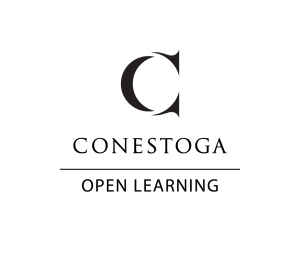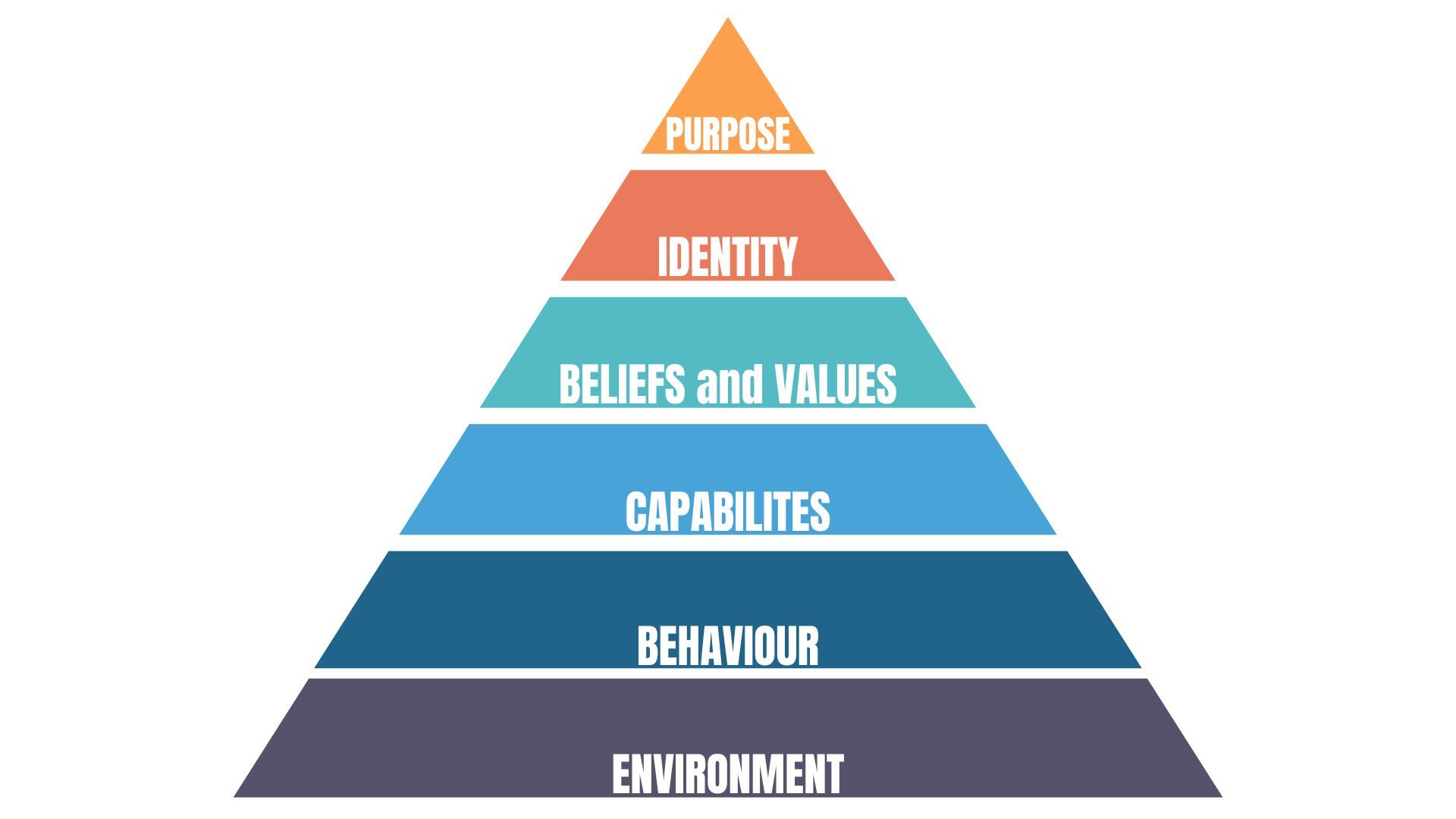Developing a client Self-Portrait, sometimes called profiling the client, involves five main steps:
- Set the stage by doing some preliminary work to prepare the client for the Self-Portrait.
- Explore meaningfulness issues and help outcomes to emerge.
- Determine which specific activities the client wants to undertake to reach outcomes.
- Choose the skills the client needs to undertake these activities successfully.
- Polish the Self-Portrait to ensure that it appears in a form that is appropriate for the client.
Setting the Stage for the Development of a Self-Portrait
After you and the client have developed a rapport, begin by discussing the Self-Portrait. Describe the Self-Portrait, how it is created, and how it can be used. Showing the client an example is often helpful. When the client seems comfortable with the idea, obtain a blank Self-Portrait Sheet and sit beside the client as you go through the steps of filling out the sheet. (Sitting beside rather than across from the client allows the client to more actively engage in the process and feel greater ownership of the Self-Portrait.)
Meaningfulness and Outcomes
The first column of the Self-Portrait is labelled Meaningfulness, and the second column is labelled Outcomes. You’ll be completing these simultaneously with the client. Before we go into the steps involved in filling in these columns, we’ll first outline what information you’re looking for.
What Is Meaningfulness?
Under Meaningfulness, you’ll identify four categories of information with the client: values, beliefs, interests, and barriers.
Values are those things that are fundamentally important to the person; they form the foundation of individual actions. Some examples of values include:
- Autonomy: Valuing the freedom to make independent decisions, work with minimal supervision, and enjoy the authority to manage tasks and projects.
- Responsibility: Taking ownership of one’s work, being accountable, and delivering on commitments.
- Integrity: Upholding honesty, ethics, and moral principles in all professional interactions.
- Independence: Appreciating the ability to work autonomously and make decisions without excessive oversight.
- Teamwork: Valuing collaboration, communication, and cooperation with colleagues to achieve common goals.
- Learning and Growth: Prioritizing continuous learning, skill development, and personal growth.
- Recognition: Appreciating acknowledgment and praise for contributions and achievements.
- Work-Life Balance: Striving for equilibrium between work responsibilities and personal life.
- Diversity and Inclusion: Supporting workplaces that promote diversity, equity, and inclusion.
Values cannot be right or wrong; they exist. They are unique to each person and reflect what’s most important to an individual.
Beliefs are ideas or worldviews that guide a person’s actions. Some examples of beliefs include:
- belief in God
- belief that people are inherently good
- belief that money brings happiness
Beliefs can also be clichés that people live by, for instance a stitch in time saves nine; the early bird gets the worm, you can lead a horse to water, but you can’t make it drink, are but a few examples.
Interests are things that the person enjoys or simply gets a kick out of. Interests often overlap with values, but they need not. For example, someone who values children highly may not necessarily want to work with children. Some examples of interests include:
- interacting with people
- using your hands
- solving problems
- playing with kids
- organizing information
- being creative
- leading a team
Being able to fulfill these three elements (living according to your values, beliefs, and interests) provides meaning to a person’s life.
Barriers to meaningfulness are things that get in the way of fulfilling values, beliefs, and interests. Some examples of barriers to meaningfulness include:
- lack of finances
- location
- lack of education
- needs of dependents
What Are Outcomes?
Outcomes are things an individual wants to achieve or accomplish in life. These are what the person wants to get from successful career planning. Outcomes can be classified in terms of three categories: personal, work-related, and educational. Some examples of personal outcomes include:
- children
- home ownership
- successful marriage
- travel experiences
Personal outcomes can be anything an individual wants to get out of life.
Work-related outcomes refer to anything that individuals want to achieve in their work. Some examples of work-related outcomes include:
- moderate income
- variety
- new developments in a field
- contributing to the community
Work-related outcomes are often more individual-specific than personal outcomes. An outcome for an artist, for example, may be renowned pieces of art, whereas an outcome for an educator may be children who can adapt to a changing world.
Educational outcomes usually are tied to work-related outcomes. That is because they often exist for the sole purpose of ensuring that work-related outcomes are achieved. For example, the educational outcome of studying photography may be desired only because of a specific work-related outcome, such as becoming a world-class photojournalist.
How Are Meaningfulness Issues and Outcomes Determined?
So, now that you know what you’re trying to identify, let’s look at the how. Meaningfulness issues and outcomes often overlap considerably. Desired outcomes usually are driven by an individual’s values, beliefs, and interests. To determine these components, the facilitator asks the client a simple question:
“In the best of all worlds, what do you want to get out of your life and career?”
The facilitator’s job, then, is:
- listening to the answer to this very general question
- isolating meaningfulness issues and outcomes—zeroing in on the values, beliefs, interests and outcomes that you hear in the answer
- recording your findings on the Self-Portrait.
Let’s revisit the process with Phoenix. Review Table 4.1 to see the initial Self-Portrait to understand what types of information have been gathered so far.
Table 4.1: Self-Portrait with Initial Information | MEANING | OUTCOMES | ACTIVITIES | SKILLS |
|---|
| WORK VALUES: Artistic creativity. BELIEFS: INTERESTS: - Enjoyment of art.
- Writing newsletters.
- Helping people.
BARRIERS/DISLIKES: Problems dealing with employment insurance. | PERSONAL: To live in a small town, have a family and be financially stable. WORK-RELATED: To work in an established business, learn the ropes, and then develop my own business. EDUCATIONAL: Considering college for graphic design programs. | PREFERRED: PAST: NEEDED: | |
Notice that the career coach who is facilitating the session has coded or categorized the information the client provided. There are information gaps: no beliefs have been identified. Given this initial information, the counsellor can ask specific questions to obtain more information.
By encouraging the client to dream, you’ll access rich information about what really motivates and drives your client. There’s no one right way to do this. All kinds of strategies can work to help clients let go of their inhibitions and dreams. For example, you might say:
“You mentioned “being realistic.” I don’t think we need to “be realistic” now. Finish telling me what you want out of your life, remembering that it’s okay to dream about any life you desire.”
Or
“Let’s say you’re 70 years old and that you’ve lived your life exactly as you wanted to. Everything has gone your way. I’m 85 now, and I bump into you again. I ask you to tell me about your life. What would you say?”
The point of the above queries is to give permission for the client to dream and generate a personal vision.
See how this response has changed the Self-Portrait in Table 4.2: Self-Portrait with partially completed meaningfulness and outcomes.
Table 4.2: Self-Portrait with Partially Completed Meaningfulness and Outcomes | MEANING | OUTCOMES | ACTIVITIES | SKILLS |
|---|
| WORK VALUES: Artistic creativity. BELIEFS: INTERESTS: - Enjoyment of art.
- Writing newsletters.
- Helping people.
BARRIERS/DISLIKES: Problems dealing with employment insurance. | PERSONAL: To live in a small town, have a family and be financially stable. WORK-RELATED: To work in an established business, learn the ropes, and then develop my own business. To be self-employed in a graphic or creative design field. Using my communications and creative design abilities in areas that will make a difference in the world, e.g., conserving the environment. EDUCATIONAL: Considering college for graphic design programs. | PREFERRED: PAST: NEEDED: | |
This additional question leads to more information. And, more importantly, the client is beginning to truly dream. Now, it’s time for the facilitator to ask more specific questions to fill in the remaining information gaps. The facilitator will ask questions about each category within Meaningfulness and Outcomes. For example:
- Values: What’s so important about these outcomes you’ve mentioned? What’s important to you? What gets you out of bed in the morning and wanting to face a new day?
- Beliefs: What clichés do you live by? What sayings do you repeat to yourself?
- Interests: What’s fun for you? What do you enjoy or get a kick out of?
- Personal Outcomes: What do you want to get out of life? What do you want to achieve?
- Work-Related Outcomes: What do you want to get out of work? What do you want to achieve?
- Educational Outcomes: What educational accomplishments would you like to achieve?
These questions can be asked in any order. The only objective is to flesh out the first two columns of the Self-Portrait. There are no strict rules or order that you must follow when doing this.
The client’s responses to these final questions for clarification result in the revised Self-Portrait in Table 4.3.
Table 4.3: Self-Portrait with Meaningfulness and Outcomes | MEANING | OUTCOMES | ACTIVITIES | SKILLS |
|---|
| WORK VALUES: Artistic creativity. Exercising competence in my work. Flexibility and independence, owning my own schedule. Work with others and value “team” approaches to working together. Care for and involvement in the community. BELIEFS: To respect the dignity of each person. I believe that it is time for women to change the world and be leaders on a new frontier. INTERESTS: Enjoyment of art. Writing newsletters, articles and press releases. Helping people. Prefer environments where I can control interruptions and focus on my tasks. BARRIERS/DISLIKES: Dislike Sales, the competitive aspect, quota expectations and the potentially aggressive side of Sales. Speaking in front of large groups in a lecture or theatre setting. Problems dealing with employment insurance. | PERSONAL: To live in a small town, have a family and be financially stable. WORK-RELATED: To work in an established business, learn the ropes, and then develop my own business. To be self-employed in a graphic or creative design field. Using my communications and creative design abilities in areas that will make a difference in the world, e.g., environmental conservation, women’s rights. EDUCATIONAL: PAST: 1-year Architectural Technology Program at College High school accounting course Basic counselling strategies Desktop publishing, and graphic design FUTURE: Considering college for graphic design programs. | PREFERRED: PAST: NEEDED: | |
If you’ve been able to work with your client to complete the first two columns, you’ll see that the Self-Portrait is beginning to take shape. Now, you’re ready to explore “Activities.” But what happens if you get stuck and your client simply cannot articulate outcomes or issues of meaningfulness? As indicated earlier, one option is to move straight to the Activities or Skills sections. Doing this often stimulates thoughts about outcomes and meaning.
Another option is to ask your client to describe outcomes that they achieved in the past and include these in the Self-Portrait. Successes don’t have to be momentous — seek out anything that the client felt good about, felt proud of or enjoyed. For example, formerly incarcerated clients often simply want to stay out of jail, so they have difficulty identifying other outcomes. In the past, however, these clients might have articulated outcomes such as successful relationships, wealth (even if illegally obtained, this is still an outcome), and prestige. Beginning with these outcomes builds self-esteem and jump-starts the process of thinking about other outcomes.
If your client struggles with verbal articulation of ideas, move to a visual format. For example, provide a stack of magazines and have the client create a collage of pictures that represent outcomes and/or meanings. You can also have your clients search the internet for images that appeal to them.
What are Activities?
The third column of the Self-Portrait sheet is labelled Activities. Activities are tasks, moves or processes that the client has undertaken in the past, wants to undertake in the future, or needs to undertake to achieve their outcomes. These are the roads that clients travel to arrive at their outcomes. Some examples of activities include the following:
- develop rapport with customers
- install brake shoes and pads
- assess clients
- frame walls
- play the guitar
Activities combine skills, attitudes, and knowledge into useful sets of procedures. Activities are thus more than simply listing skills, attitudes, or knowledge; they provide purpose and direction to the client’s skills, attitudes, and knowledge. It is important for clients to identify activities because these show clients (and potential employers) how they can reach specific outcomes; hence, they are a demonstration of ability and competence.
How Are Activities Determined?
Activities are usually identified after outcomes and meaningfulness issues have been determined or at any time during the Self-Portrait process.
- Start with past activities, that is, activities the client has previously engaged in.
- Move to identify preferred activities — ones that the client wants to undertake to reach desired outcomes.
- Move to needed activities — ones that the client must undertake to achieve desired outcomes. Needed activities may or may not be the same as preferred activities. Different methods of identifying activities can be used depending on what types of activities are being sought.
Identifying Past Activities
Ask the client to identify things done in the past, including hobbies, sports, leisure activities, work experiences, or volunteer experiences.
For example, a young client with no previous work experience responded with the following: “Well, I don’t know if this is helpful, but I used to really be into cycling, and I’ve fixed a lot of bikes. Do you want me to list some things I can do with bicycles? [Facilitator nods]. Well, I can repair tires, replace chains, install sprockets and derailleurs, replace bearings, and straighten wheels.”
Most clients are not quite as direct as this young person, but this extract gets the point across.
Our client, Phoenix, has identified helpful content for the Past Activities column in Table 4.4.
Table 4.4: Self-Portrait with Information About Past Activities | MEANING | OUTCOMES | ACTIVITIES | SKILLS |
|---|
| WORK VALUES: Artistic creativity. Exercising competence in my work. Flexibility and independence, owning my own schedule. Work with others and value “team” approaches to working together. Care for and involvement in the community. BELIEFS: To respect the dignity of each person. I believe that it is time for women to change the world and be leaders on a new frontier. INTERESTS: Enjoyment of art. Writing newsletters, articles and press releases. Helping people. Prefer environments where I can control the interruptions and focus on my tasks. BARRIERS/DISLIKES: Dislike sales, the competitive aspect, quota expectations and the potentially aggressive side of Sales. Speaking in front of large groups in a lecture or theatre setting. Problems dealing with employment insurance. | PERSONAL: To live in a small town, have a family and be financially stable. WORK-RELATED: To work in an established business, learn the ropes, and then develop my own business. To be self-employed in a graphic or creative design field. Using my communications and creative design abilities in areas that will make a difference in the world, e.g., environmental conservation, women’s rights. EDUCATIONAL: PAST: 1-year Architectural Technology Program at College High school accounting course Basic counselling strategies Desktop publishing, and graphic design FUTURE: Considering college for graphic design programs. | PREFERRED: PAST: Winning high school team sports playoffs. Completing sketches for family and friends. Promoting a concert, which resulted in a community group repaying debt. Acting as a team leader during the Summer Tech program. NEEDED: | |
It’s important to identify as many activities in as many spheres of life as possible. Later, this will help show clients that their transferable skills — activities they’ve completed in other aspects of their lives — can apply to their work life. With individuals with a significant amount of work experience, you can focus more on previous work-related activities. In all cases, however, it is always safest to identify as many activities as possible.
Identifying Preferred Activities
After identifying as many past activities as the client can remember, identify preferred ones. This helps to determine how the client wants to achieve desired outcomes. In many cases, preferred and past activities will overlap, particularly in those cases where clients are engaged in meaningful roles and simply want a minor change. For example, one of a client’s past activities could be facilitating groups of people. They may also want to do this in the future; therefore, it would be listed as a preferred activity.
In cases where clients want a minor change, the Self-Portrait technique works equally well to create a career action plan or a roadmap of where clients want to be in their careers.
The counsellor can help clients identify preferred activities by asking: “In the best of all worlds, what would you like to be doing on a day-by-day basis? How would you ideally like to reach your goals?”
The client may respond with something like: “I’m not sure I know enough about the video or film industry to know what I’d like to be doing. I guess I’m really interested in the special effects used in shows. Like, you know, I’d love to design miniature sets with robotic characters like monsters and space aliens or building sets where whole cities are on fire, and it’s all done in miniature.”
The client would explain a great deal more than this, but this provides an idea of the types of preferred activities a client may identify:
- create special effects (miniaturized)
- design miniature sets
- design robotic characters
Now, the client is becoming much more specific about a desirable role. Continue this discussion and further delineate the client’s preferred activities. What if, however, the client stops here and does not know which activities would be preferable? Or, what if the client cannot identify any preferable activities? In this case, further exploration is needed to help the client have a clearer idea of where they want to be and what’s needed to get there. To do this, move the Self-Portrait process to the next step: identifying needed activities.
This section focuses on what the client has to do in order to better identify preferred activities. If the client can create a comprehensive list of preferred activities, the next step is to sequence these activities in order of preference. Continuing with the previous example, the interviewed person may prefer to work with miniature robots more than with miniature sets. Identify this in the Self-Portrait by listing preferred activities in the appropriate sequence.
Our client, Phoenix, has identified helpful content for the Preferred Activities column in Table 4.5.
Table 4.5: Self-Portrait with Information About Preferred Activities | MEANING | OUTCOMES | ACTIVITIES | SKILLS |
|---|
| WORK VALUES: Artistic creativity. Exercising competence in my work. Flexibility and independence, owning my own schedule. Work with others and value “team” approaches to working together. Care for and involvement in the community. BELIEFS: To respect the dignity of each person. I believe that it is time for women to change the world and be leaders on a new frontier. INTERESTS: Enjoyment of art. Writing newsletters, articles and press releases. Helping people. Prefer environments where I can control the interruptions and focus on my tasks. BARRIERS/DISLIKES: Dislike sales, the competitive aspect, quota expectations and the potentially aggressive side of Sales. Speaking in front of large groups in a lecture or theatre setting. Problems dealing with employment insurance. | PERSONAL: To live in a small town, have a family and be financially stable. WORK-RELATED: To work in an established business, learn the ropes, and then develop my own business. To be self-employed in a graphic or creative design field. Using my communications and creative design abilities in areas that will make a difference in the world, e.g., environmental conservation, women’s rights. EDUCATIONAL: PAST: 1-year Architectural Technology Program at College High school accounting course Basic counselling strategies, Desktop publishing, and graphic design FUTURE: Considering college for graphic design programs. | PREFERRED: Working in a team setting. Doing design work—problem-solving, aesthetic design, marketing, and promotion, helping the client to reach their target population. Working with clients and meeting a variety of people. Connecting and networking in the community. “Making it happen,” helping to get the product developed, seeing the finished product, knowing the impact. Doing all of this at a pace that feels balanced. (I want a balanced social, family and work life.) PAST: Winning high school team sports playoffs. Completing sketches for family and friends. Promoting a concert, which resulted in a community group repaying debt. Acting as a team leader during the Summer Tech program. NEEDED: | |
Identifying Needed Activities
Move to identifying needed activities after the client has identified as many preferred activities as possible (or if the client gets stuck at preferred activities). The list of needed activities will specify what the client should do to continue the process of managing their career development. Common examples of needed activities include:
- develop network
- job shadow
- conduct library research
- interview experts
By engaging in these activities, the client will be better able to continue identifying preferred activities, clarifying outcomes, and, more precisely, specifying values and interests. In this context the Self-Portrait becomes more of an instructional tool than a clarification or assessment tool because the client may not yet know what the needed activities are. In this case, it’s your role to help the client identify ways to gather further information or insights.
Our client, Phoenix, has identified significant content for the Needed Activities section in Table 4.6.
Table 4.6: Self-Portrait with Information About Needed Activities | MEANING | OUTCOMES | ACTIVITIES | SKILLS |
|---|
| WORK VALUES: Artistic creativity. Exercising competence in my work. Flexibility and independence, owning my own schedule. Work with others and value “team” approaches to working together. Care for and involvement in the community. BELIEFS: To respect the dignity of each person. I believe that it is time for women to change the world and be leaders on a new frontier. INTERESTS: Enjoyment of art. Writing newsletters, articles and press releases. Helping people. Prefer environments where I can control the interruptions and focus on my tasks. BARRIERS/DISLIKES: Dislike sales, the competitive aspect, quota expectations and the potentially aggressive side of a role in sales. Speaking in front of large groups in a lecture or theatre setting. Problems dealing with employment insurance. | PERSONAL: To live in a small town, have a family and be financially stable. WORK-RELATED: To work in an established business, learn the ropes, and then develop my own business. To be self-employed in a graphic or creative design field. Using my communications and creative design abilities in areas that will make a difference in the world, e.g., environmental conservation, women’s rights. EDUCATIONAL: PAST: 1-year Architectural Technology Program at College High school accounting course Basic counselling strategies Desktop publishing, and graphic design FUTURE: Considering college for graphic design programs. | PREFERRED: Working in a team setting. Doing design work—problem-solving, aesthetic design, marketing, and promotion, helping the client to reach their target population. Working with clients and meeting a variety of people. Connecting and networking in the community. “Making it happen,” helping to get the product developed, seeing the finished product, knowing the impact. Doing all of this at a pace that feels balanced. (I want a balanced social, family and work life.) PAST: Winning high school team sports playoffs. Completing sketches for family and friends. Promoting a concert, which resulted in a community group repaying debt. Acting as a team leader during the Summer Tech program. NEEDED: To prepare a polished portfolio for application to colleges and for future employment interviews. To develop a personal contact list. To conduct information interviews in the graphic design field and develop future employment contacts. | |
What are Skills?
Having identified the client’s outcomes, meaningfulness issues, and activities, the Self-Portrait process moves to identifying skills.
Skills are competencies, knowledge and attitudes that enable clients to effectively carry out their activities. Whereas activities are usually goal-directed and specific, skills can often apply to various activities and help to achieve a variety of goals. In other words, skills are generally far more transferable than activities.
How are Skills Determined?
In many ways, identifying skills is the simplest part of completing a self-portrait. Although it’s not difficult, the Skills column of the Self-Portrait is often the longest column and can take some time to complete.
To identify tools and techniques, select one of the client’s past activities and ask:
- What sorts of competencies did you need to undertake this activity?
- What kind of knowledge did you need to undertake this activity?
- What attitudes did you need to undertake this activity?
Repeat this process for each and every past activity listed on the Self-Portrait. For example, consider asking the client who has repaired bicycle tires the above questions.
The client’s response may be something like the following: “To repair a bicycle tire, I guess I needed some basic skills like using combination wrenches and screwdrivers, and I suppose I used some techniques for removing and replacing tires. On the knowledge side, I had to simply know about different types of tires, tubes, and wheels. As for attitudes, all I can think of is that you really have to be careful or thorough to repair tires well.”
Pulling out the skills from this narrative, the counsellor would write the following list:
- use combination wrenches
- use screwdrivers
- use tire removal and reinstallation techniques
- understand bicycle tire, tube, and wheel types
- exercise care, thoroughness
Following this procedure for each past activity, you will generate a long list of tools and techniques. After all the past activities have been explored for underlying tools and techniques, move along with your client to preferred and needed activities for the following:
- Skills from past activities that are transferable to preferred and needed activities: What skills, knowledge and attitudes could help the client to achieve the preferred or needed activities?
- Skills that will be needed to carry out preferred and needed activities: What additional skills, knowledge and attitudes could help the client to achieve the preferred or needed activities?
In the first case, each tool and technique that is transferable to preferred and needed activities can simply be highlighted with an asterisk or by underlining. In the second case, the client may need to explore further to determine the necessary tools and techniques. For example, the client interested in creating miniature robots will need to talk to people who do this and find out what additional skills, knowledge, and attitudes they need to undertake this activity.
Highlight the skills the client will need but does not currently possess. Use a different marking system here than the one used for transferable tools and techniques. For example, if you’ve underlined transferable tools and techniques, use a highlighter pen or a different colour of ink to distinguish needed tools and techniques.
Notice the esteem-building power of identifying skills in this way. In a very short period, the career coach can help the client to identify a host of abilities. Almost invariably, completing this portion of the Self-Portrait increases the client’s confidence, even when the client has had no work experience or has had socially unacceptable experiences (e.g., theft). Every activity that the client has undertaken requires skills, attitudes and knowledge. For example, consider a client whose only successful activity has been break and enter. To break and enter successfully, the client needs the following tools and techniques:
- organizational skills
- planning skills
- rapport-building skills (to garner the support of a confederate)
- observation skills
- trust-testing skills (to ensure the confederate is trustworthy)
- knowledge of security systems
Even though breaking and entering is not a socially acceptable activity, it requires a variety of skills that can be transferred to many activities that are socially acceptable. Notice, too, that the career coach can make no judgment of the client at any time in the Self-Portrait process. The client can freely report any activities without fear of judgment, recrimination, or external control.
Our client, Phoenix, has identified content for the Skills column in the completed self-portrait in Table 4.7:
Table 4.7: Completed Self-Portrait with Information About Past Skills | MEANING | OUTCOMES | ACTIVITIES | SKILLS |
|---|
| WORK VALUES: Artistic creativity. Exercising competence in my work. Flexibility and independence, owning my own schedule. Work with others and value “team” approaches to working together. Care for and involvement in the community. BELIEFS: To respect the dignity of each person. I believe that it is time for women to change the world and be leaders on a new frontier. INTERESTS: Enjoyment of art. Writing newsletters, articles and press releases. Helping people. Prefer environments where I can control the interruptions and focus on my tasks. BARRIERS/DISLIKES: Dislike sales, the competitive aspect, quota expectations and the potentially aggressive side of a role in sales. Speaking in front of large groups in a lecture or theatre setting. Problems dealing with employment insurance. | PERSONAL: To live in a small town, have a family and be financially stable. WORK-RELATED: To work in an established business, learn the ropes, and then develop my own business. To be self-employed in a graphic or creative design field. Using my communications and creative design abilities in areas that will make a difference in the world, e.g., environmental conservation, women’s rights. EDUCATIONAL: PAST: 1-year Architectural Technology Program at College High school accounting course Basic counselling strategies; Desktop publishing, and graphic design FUTURE: Considering college for graphic design programs. | PREFERRED: Working in a team setting. Doing design work—problem-solving, aesthetic design, marketing, and promotion, helping the client to reach their target population. Working with clients and meeting a variety of people. Connecting and networking in the community. “Making it happen,” helping to get the product developed, seeing the finished product, knowing the impact. Doing all of this at a pace that feels balanced. (I want a balanced social, family and work life.) PAST: Winning high school team sports playoffs. Completing sketches for family and friends. Promoting a concert, which resulted in a community group repaying debt. Acting as a team leader during the Summer Tech program. NEEDED: To prepare a polished portfolio for application to colleges and for future employment interviews. To develop a personal contact list. To conduct information interviews in the graphic design field and develop future employment contacts. | Organizational: Well-organized and responsible individual with excellent work ethics and attitude. Gives full commitment and energy to a project and follows through to completion. Patient individual who is flexible and knows when to compromise. Dedicated to learning throughout life using self-directed learning. Have developed many abilities through mentoring. Design / Written Communication: Create internal vision of final product and then set about to produce the results. Experienced in creative design (e.g., flyers) and events promotion. Polished written communication skills. Creative flair and use of words—wordsmithing. Interpersonal: Communication, networking and negotiation skills. Maintained positive team relations with staff, volunteers and Board of Directors. |
Back to Phoenix’s story
Polishing the Self-Portrait
The finished Self-Portrait can take any form that works for your client. Make the Self-Portrait as large or as small as the client desires. Use whatever format fits — experiment with different shapes and colours. Remember that the portrait is always a work in progress. The point is not to obtain an exhaustive description of the client; rather, it is to gather sufficient information to mobilize the client. It’s a snapshot of now, and hopefully, the client will leave with the ability to embellish the Self-Portrait as desired over time.
The Self-Portrait can be considered complete when the client has sufficient information to make the next few career development moves. Always, however, encourage the client to revisit and re-examine the Self-Portrait after taking action steps. When exploration activities, training, education, volunteer experience, or work experience have been completed, encourage the client to review the portrait to see if he or she wants to add or change anything based on the new experiences.
When the client is ready to make some moves, help the client organize the information in the Self-Portrait in a way that makes sense for the client. Have the client do this to increase a personal sense of control over the Self-Portrait. Organizing the Self-Portrait entails making it readable, categorizing groups of items, and prioritizing items within each column. The goal is to make the Self-Portrait as meaningful as possible for the client, not the facilitator! Cleaning it up may entail changing the format completely (e.g., some clients reorganize the information into concentric circles). Whatever works for the client is the best way to go. The Self-Portrait process comes to an end once this stage is completed.





































